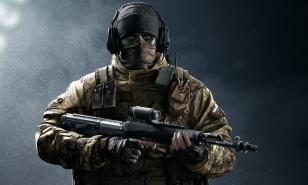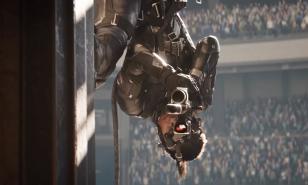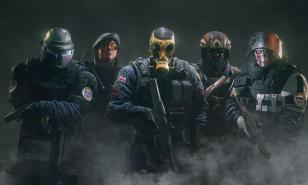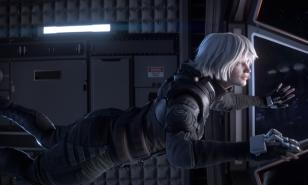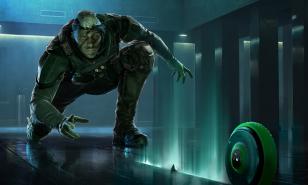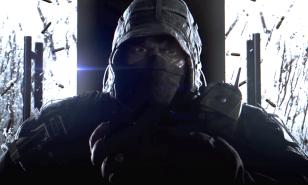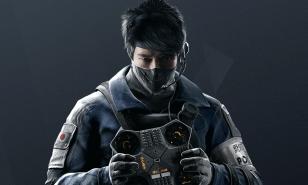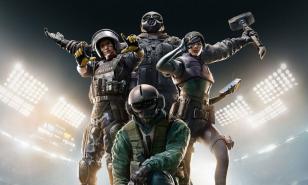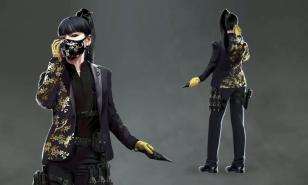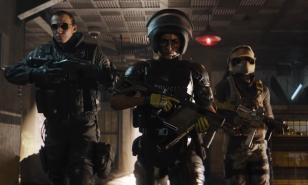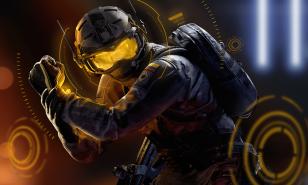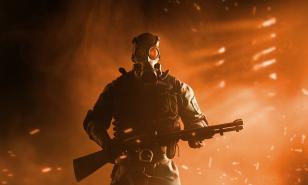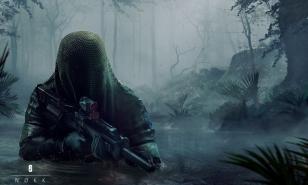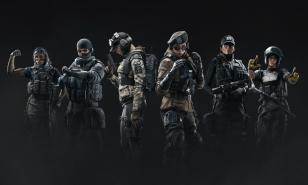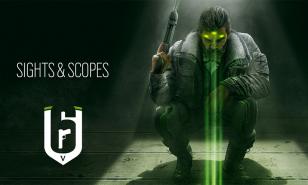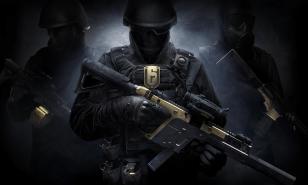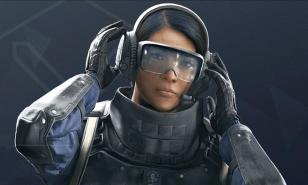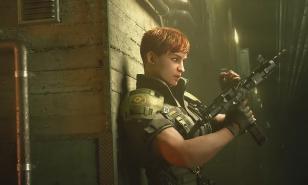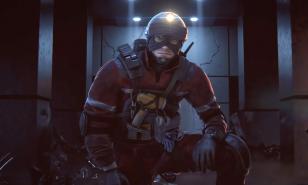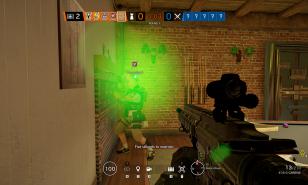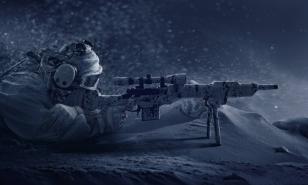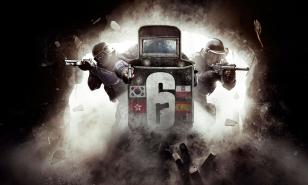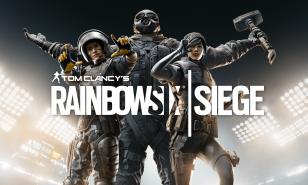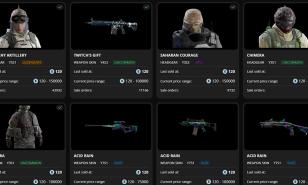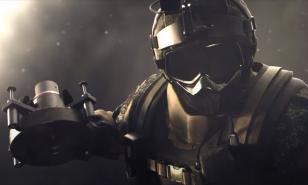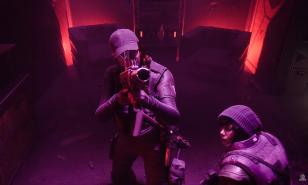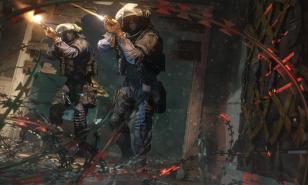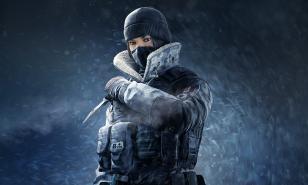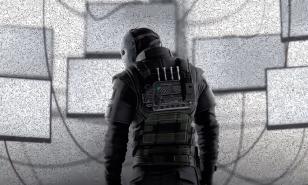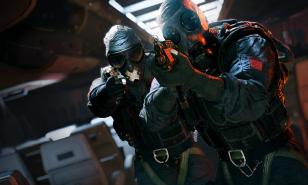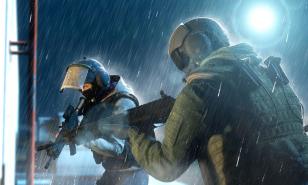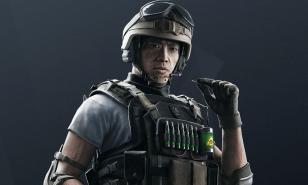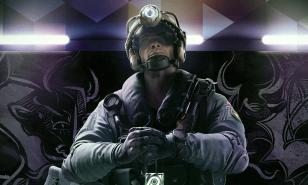[Top 15] Rainbow 6 Siege Best Sound Settings That Give You an Advantage
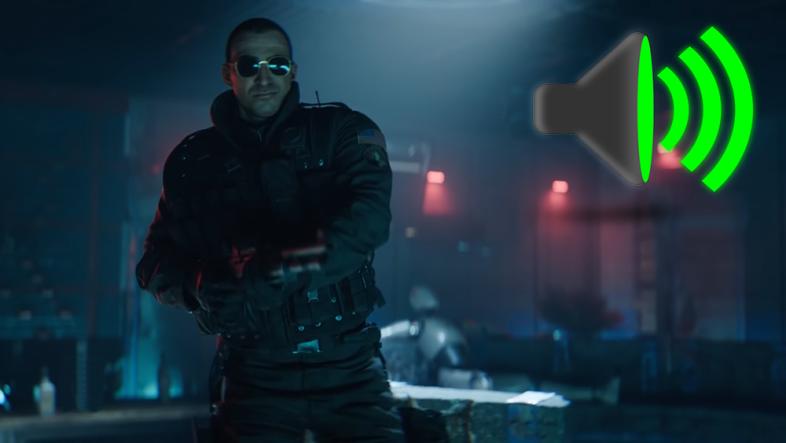
Sound plays a major role in Siege primarily because it’s like half of the factor when it comes to situational awareness. Siege is a tactical game where any moment can be your death and opportunities to get a kill or make a move that’ll contribute to winning the round only have a small window.
That’s why sound is very important, because the better you can hear sounds in the game, the more aware you’ll be of where your opponents and teammates are, and that’ll increase your chances of winning or surviving in a match. Siege is a very difficult game to play without a good handle on sound, but there are many settings that you can tweak to have that.
15. The Value of Hi-Fi
There are three dynamic range choices in Siege and ever since the game was released, it has been a long topic of debate within the Siege community which one is the best, and I, for one, believe that it really depends on your audio hardware. Hi-Fi dynamic range features the best audio quality in the game if what the user wants is more realistic sounding audio effects. Its weakness, however, is that the sound feels more focused on the front and not from the sides.
So if the audio that you want to hear is coming from the sides, you might not be able to hear it well if you’re using Hi-Fi. However, if the only audio system you have at the moment is stereo speakers, then I would recommend setting your dynamic range to Hi-Fi. That’s because Hi-Fi works better for speakers than any other dynamic range changes which generally works better for headsets or earphones.
What Should You Set It To?
- Set Dynamic Range to Hi-Fi if you’re using stereo speakers
14. Mute the BGM
Siege has beautiful music, and a lot of them throughout the seasons have become iconic, especially the old school Siege theme. Each map has their own dedicated background music, and again, as expected of a highly successful and popular franchise, the background music from each map is also great and can really set the mood for a good tactical gunfight.
The problem with the background music is that once the round starts, even though it's still in the preparation phase, it can mask some sound that’s coming from your team’s comms. Of course, you can just simply lower the volume of the BGM in the in-game settings, but just to be sure that you’ll catch everything that your teammates say, I recommend that you just turn it off completely as it doesn’t add any competitive edge anyway.
What Should You Set It To?
- Turn it down all the way to 0 especially if you’re on comms with teammates
13. Don't Rely on the In-game Voice Chat
As mentioned before, Siege is a highly popular and successful multiplayer shooter game, and it has been around for many years, so of course, it’s been through many patches and improvements. That’s why its in-game voice chat is just as good as many other multiplayer games out there, even the newer ones. However, it can’t be denied that using external apps like Discord is still a much better way to communicate with your gaming buddies.
Discord specializes in providing gamers great quality audio communications and it has a lot of features within the app that makes voice comms much clearer, especially compared to most in-game voice comms. So if you’re playing with other players that you’ve known for a while, it’s really always better to just hop in on Discord and communicate through there, or if you’ve only met your teammates through a random online match, it’s strongly recommended that you invite them on a Discord server.
What Should You Set It To?
- Turn it completely off if you’re playing with other players that you already know
- Hop in on Discord and make it your primary way of communicating in online games
12. Mute on Unfocused
This is one setting that I’m very thankful that Siege has and I wish most other games out there do. That’s because it lets you choose if you want the game to stop producing audio when you alt-tab from it. And while a lot of gamers prefer their game to not make any sound when they’re alt-tabbed from it, for Siege, it’s important that players keep this setting off. With this setting off, even if you alt-tabbed while the game is still loading, you’ll know when the round has already started.
This is very important because Siege is a team game, unless of course you’re trying out the new game modes solo, and it will put your whole team in a hard place if even one of you is alt-tabbed from the game when the round is already starting. There are also times when you’re in solo queue and you got killed but there are no cameras left to help your remaining teammates with, so a lot of players in this situation would alt tab to wait out the round, and having Mute on Unfocused turned off will let them know when the round is already over.
What Should You Set It To?
- Set it to Off all the time, especially if you always alt tab from the game.
11. Dialog Volume
Dialog volume refers to the voice lines of the operators, and as we all know, Siege features a wide selection of operators and each of them have very unique personalities and different backgrounds. Each of their voice lines are tailored to their background stories, and by the way, they’re all interesting. Their voice lines add a lot of immersion in the game and that’s just a small reason why I’m recommending to keep this on and at full volume.
The thing is, a lot of the voice lines from operators also have a practical use. So yes, while the operators are speaking, their lines have a small chance of masking your voice comms with your teammates, but the payoff is greater. That’s because a lot of the operator voice lines in Siege are a signal when the operators are performing their special abilities or using their special gadgets. That’s why when that particular voice line from Caveira plays, you’ll know that Interrogation is happening, and that’s just one example.
What Should You Set It To?
- Turn it On all the time because the operator voice lines are great sound cues for when a special ability or gadget is being used
10. Dynamic Range – TV
TV is another Dynamic Range setting in Siege that is supposed to be the middle ground for Hi-Fi and Night Mode. While TV is probably the least popular Dynamic Range setting in the Siege community, I’ve seen some posts in Reddit that say that TV works best for them. As mentioned before, there’s really no best Dynamic Range setting per se, but it mostly depends on the hardware you’re using.
If you’re using a 2.1 headset, then TV could be the best Dynamic Range setting for you. That’s because it’ll have the audio quality and “in your face” louder sound effects that Hi-Fi does, and it’ll also highlight the “quiet sounds” that’s a specialty of Night Mode. Just not as good as the two, but you’ll be getting a good balance of front and side sounds, which is also great.
What Should You Set It To?
- If you’re using a 2.1 or stereo headset, switch your Dynamic Range to TV
9. Know when to use Suppressive Fire
This is not exactly a setting where you can change values in the in-game settings, but a way to use sound during a match to contribute to the team. Not to be confused with using suppressors, suppressive fire is when you perform long bursts in order to overwhelm your enemies, be it for fragging them, or covering your teammates. As for the latter, using suppressive fire is a great tactic to distract enemies or get their attention while your teammates are performing their roles.
Roles just as flanking or defuser planting. As you play through Siege matches, you’ll learn that one of the best ways to hide the fact that your team is planting the defuser from enemies is to fire your gun loudly and continuously. That way, they won’t hear the sound cues from planting the defuser because all they’d hear is the sound of your gunshots. So learn to use suppressive firing with great timing and not only will you be able to pin down your opponents with brute force, you’ll also be able to cover your teammates well.
What Should You Set It To?
- Use loud suppressive fire when you’re trying to hide the fact that your team is planting the defuser to your enemies
- Loud suppressive fire is also effective for distracting enemies or getting their attention while your other teammates are flanking
8. Holes Are Still Important
Taking advantage of holes is a long and tried method in Siege that still works to this day, and no, I’m not talking about murder holes. Siege, as you probably already know, has a lot of realism incorporated into the game. One such thing is having destructible surfaces like walls, hatches, and floors. Most destructible walls in the game can be reinforced and be turned into metal, but if you damaged a wall enough before reinforcing it, that damage will remain even after the wall has been reinforced.
That damage to its wooden part will make it so that the reinforced wall will be thinner, so it’ll be easier for players to hear what’s going on the other side. This tactic is commonly used by Bandit players so that they’ll be able to perform the “Bandit Trick” a lot easier. That’s because when they punch some holes on the wall that they’re going to protect before reinforcing it, they’ll be able to hear where the breach charge has been deployed, and the Bandit player will be able to deploy his Shock Wire on the correct wall.
What Should You Set It To?
- Before reinforcing a wall, punch some holes in it first. That way, it’ll be easier for you and your teammates to hear sound cues from the other side.
- This is specially useful if you’re playing Bandit because it’ll let you know which wall the breach charge has been deployed to
7. Get a 7.1 Surround Headset
A lot of players to this day underestimate the power of hardware. That mostly happens to old school gamers, and I understand that because I used to be one of them. It does make sense. If you’re able to perform well in Siege with an old school membrane keyboard, is it really worth it to spend a lot on a new mechanical keyboard? It’s a good question, but the answer is yes. The same thing goes when it comes to audio, because a better hardware will really help a lot.
With a 7.1 surround headset, you’ll be able to hear where enemies are much easier. That’s very important in Siege because situational awareness is one of the keys to winning the round. With a good 7.1 surround headset, it will be kinda like you have a legal wall hack because you’ll have a good chance of knowing if an enemy is on the other side of a wall or not. There are a lot of very quiet sounds in Siege like the sounds enemies make when they’re just changing stances or when they’re slowly advancing, and a 7.1 surround headset will help you detect those.
What Should You Set It To?
- Get a good 7.1 headset because it’ll greatly help you in detecting enemies around the map
6. Use Spatial Sound
As mentioned above, situational awareness is very important in Siege, and spatial sound will really help with that. With spatial sound turned on, you’ll be able to hear better if the sound cue is coming from above, below you, or from the same level. It’s not perfect of course, but it’s still better than not having it at all. I’ve tested it many times, and it really does help me know where the sounds are coming from, and that’s extremely helpful in Siege where there’s a lot of verticality.
The good thing about spatial sound is that most PC players have access to it and it’s all for free on Windows. For Windows 11 users, all they have to do is right click on the sound icon on the right side of the task bar, select Sound Settings, choose their audio hardware, and after that, just scroll down a bit and you’ll find the toggle for Spatial Sound. It works for most other games too, so there’s really no reason to not just keep it on all the time, especially since it doesn’t affect audio quality in any way. It just helps you recognize sound direction better.
What Should You Set It To?
- Turn it On especially when you’re using a 7.1 surround headset because it’ll really be better for your situational awareness in Siege
5. Night Mode
Out of all the Dynamic Range settings, Night Mode is probably the most popular. It’s certainly the most recommended if you go through the posts and comments in the Siege community, and that’s very understandable. That’s because Night Mode focuses on highlighting the “quiet sounds” of the game more than the loud ones. A good example of that is Caveira’s Silent Step special ability which makes her footsteps, even while sprinting, very quiet.
But even with the Silent Step special ability, Caveira’s footsteps volume won’t be completely 0. Night Mode increases the chances of you hearing Caveira even while her Silent Step is active, especially when she’s just a few meters away from you. There are many of these quiet sounds in Siege and it helps a lot if you’re able to hear them, and that’s why most people use Night Mode. I would say, however, that Night Mode works best if you have a 7.1 surround headset or a really good quality earphone.
What Should You Set It To?
- Switch your Dynamic Range setting into night Mode if you have a 7.1 surround headset
- Night Mode dynamic range is also really good if you’re using high quality earphones
4. Know Each Gadget's Sound
This is one of the items in this list that is not exactly a sound setting, but directly involves sound in the game, and it’s very important. Each weapon and utility in Siege has a unique sound, and being familiar with their sound effect goes a long way in winning a match, or at least surviving a round. For example, Glaz’s OTs-03 sniper rifle sounds very distinct, so if you’re defending and you heard it, you’ll instantly know that there’s a Glaz on the attacking team, and that would let you know to be careful around windows or open areas.
Even the generic utilities in the game have their own sound and being familiar with them will let you know when they’re being used and will help your game sense when it comes to reacting to them. For example, when you’re pushing the objective spot and hear an impact grenade, chances are high that a defender just used it to destroy a destructible wall in order to make a quick rotation hole in order to flank you, and through that, you’ll know to expect an attack from behind or from the side.
What Should You Set It To?
- Keep playing the game to gain more experience and familiarity on how each weapon and gadgets sound like
- Each gadget and weapons in the game have their own unique sound and knowing them greatly helps when it comes to situational awareness
3. Suppressors Are the Best
Yes, you read the title correctly. Suppressors are the best, for most guns at least, and that goes especially now that the devs have removed its damage penalty on weapons. So now, the only drawback to using a suppressor is that it doesn’t add any recoil control on the weapon. But what does that have to do with sound, you ask? Well, everything, and that’s why it’s number three in this list. It may not be an in-game setting, but using a suppressor will greatly help in sound detection and situational awareness.
That’s because the suppressor barrel attachment will greatly silence a weapon’s gunshots. That will greatly help in making the enemy not immediately learn where you’re shooting from, but it’ll also help you in hearing your surroundings even while you’re shooting. That’s very important because anything could happen at any time in Siege, and with a suppressor on your weapon’s barrel, you’ll likely be able to hear enemies when they’re flanking you even while you’re shooting the opponent that’s in front of you.
What Should You Set It To?
- Change your operator’s weapon’s barrel attachment to a suppressor if you don’t need a lot of recoil control anyway
2. DTS for Headphones
We talked about spatial sound in one of the entries abovet and while it’s great that we have a free option, there is also a premium one, and just like most things in life, obviously, the premium one is better. DTS for Headphones is the premium spatial sound that is best for Rainbow Six Siege. There is another choice which is Dolby Atmos but I’ve tested it and that one is better for watching movies or playing music. For gaming, DTS for Headphones is what I really recommend.
The good thing is that even though it’s not free, it’s a one time payment. So once you’ve paid for it, you can always use it whenever you fire up Rainbow Six Siege. In the tests that I’ve performed, it really is better than the free spatial sound available in Windows. How much would probably depend on you and your audio hardware, but my rough estimate would be around 20-30%. With DTS for Headphones enabled and a really good headset or earphones, you’ll always have a good handle on where your enemies are.
What Should You Set It To?
- Go to Microsoft Store and purchase DTS for Headphones
- This works best when paired with a good 7.1 Headset or high-quality earphones
1. Don't Underestimate Earphones
Most Siege players probably think that the best audio hardware for the game would be a headset. But if you go and watch Siege esports events, you’ll notice a lot of popular pro Siege players using earphones with a headset on top of it to cover their entire ear. That’s because high quality earphones produce very detailed sound, and as mentioned before, there are a lot of “quiet sounds” in Siege that can be very difficult to hear normally. The operative word there is normally.
Because if you have the budget for one, I really recommend you to get a high-quality headset and do what the pros do and use a headset on top of it to cover your entire ear. With that, it’s a guarantee that all you’ll hear are the in-game sounds and you’ll likely hear very quiet sounds like Caveira’s Silent Step even when she’s far away. This setup is highly recommended when you’re playing a game in ranked where competitiveness is the priority, and definitely, it will give you the competitive edge when it comes to situational awareness.
What Should You Set It To?
- High quality earphones, because that’s what a lot of famous pro Siege players use.
- Once you have a high-quality earphone, use a headset on top of it so that your entire ear will be covered and all you’ll hear will be Siege’s in-game sounds.
Attention operator, please be advised. There is a new directive from Six. Read up on these related articles, and prepare for deployment:
You May Also Be Interested In:
- Log in or register to post comments
 Home
Home PC Game Trailers
PC Game Trailers News
News Menu
Menu


